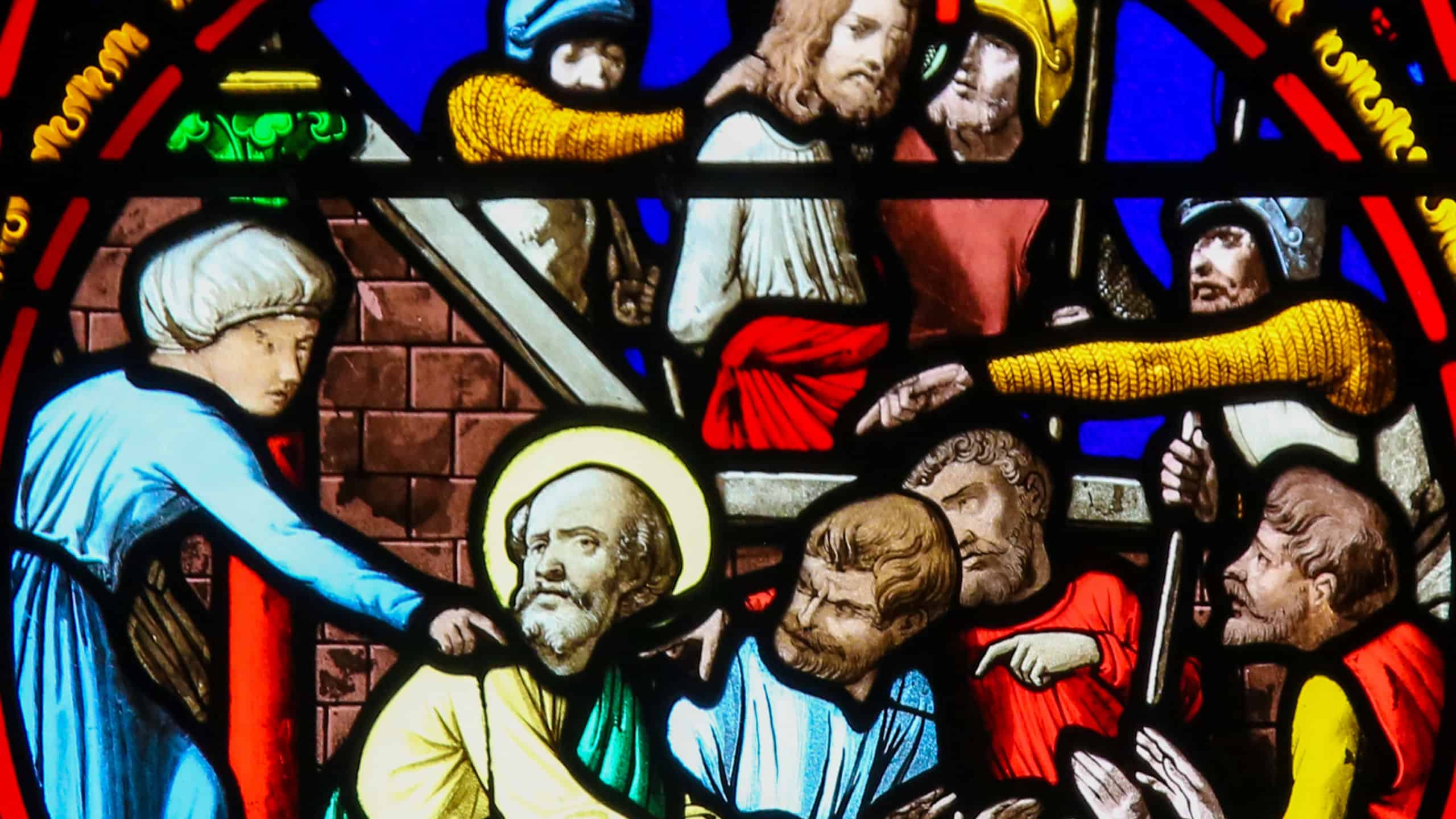God has been at work since time began to heal and restore all of creation—including and especially human beings—and a major throughline of that restorative work is the God-initiated covenant with an ancient people group who became known as the Jews. (Read an overview of that history here.) At the height of the Roman Empire’s power and reach, in a distant province they called Judaea, new chapters of that much older story began to be written.
John the Baptizer: A Voice in the Wilderness
Four centuries or so after the fall of Jerusalem to the Babylonian Empire, a prophet arose in Roman-ruled Judea who described himself in the words of a predecessor who had been dead for 700 years: “a voice of one crying in the wilderness: Prepare the way for the Lord” (Mark 1:3; cf. Isaiah 40:3). In his words and manner, John the Baptizer positioned himself squarely in a millennium-long prophetic tradition, delivering to 1st-century Jews a message of repentance to prepare themselves for a promised move of God on their behalf.
Jesus of Nazareth: A Threat to the Status Quo
Because his fellow Jews had been hoping and praying for centuries for a deliverer they called messiah (“anointed one”), some believed John must be the one they’d been waiting for. No, said John, and pointed his followers to another Jewish prophet, teacher, and healer: Jesus of Nazareth, about whom the Baptizer said, “He will baptize you with the Holy Spirit” (Mark 1:8).
Jesus conducted his three-year ministry mostly in the district of Galilee where he grew up, far from the seats of Judean religious (Jerusalem) and political (Caesarea Maritima) power. Even so, the contents of and popular response to his message garnered increasingly concerned attention, first from Jewish religious leaders and eventually from regional Roman officials. Judea in Jesus’ time was a powder keg of potential anti-imperial violence, and populist figures were viewed by both Jewish and Roman powerbrokers with suspicion. (Roman officials wanted to avoid having to put down yet another irksome rebellion, while Jewish leaders wanted to avoid nationwide suffering provoked by a few seditious radicals.)
The Kingdom of God: A Radical Message
As to the contents of Jesus’ message, those most invested in protecting the status quo were most likely to be alarmed. “The kingdom of God has come near” (Mark 1:15) might sound familiar and nonthreatening today, but it was neither at the time. Roman overlords wanted no king but Caesar, and Jewish leaders wanted a king to restore the nation of Israel. And so a kingdom that would supersede either one was dangerously good news in the ears of people who were left behind by both—and that’s exactly what Jesus announced and embodied. Those who drew near to him encountered God in a way they did not expect but could not deny.
The Spread of the Gospel: From Persecution to Multiplication
What’s more, the Jewish movement around Jesus did not die out once he was executed by the Roman government in the days leading up to Passover. His followers did not stop encountering God through him. Fifty days after he was crucified, in Jerusalem during the Jewish feast of Pentecost, they received into themselves a Spirit they recognized as sent from Jesus—just as John the Baptizer had predicted. They began to preach to their fellow Jews: Not only had Messiah won victory over death; he had also released his Spirit over all who followed him, somehow empowering them to participate in his resurrection life.
God’s work through the Jews for the sake of the world had come to fruition in the life, death, and resurrection of Jesus!
The religious leaders who had lobbied Rome for Jesus’ execution now turned their attention to stamping out the movement that was unexpectedly multiplying after his death—thanks to his followers, now called apostles, who refused to stop proclaiming Jesus as Lord. One of those Jewish leaders, named Saul, went so far as to preside over the execution of a Jesus follower named Stephen outside the gates of Jerusalem (see Acts 7–8:3). This resulted in a run-for-your-lives scattering of Jesus’ followers throughout Judea—and, inadvertently for Saul and Co., the spread of the gospel among Jews throughout the region.
A Dream and A Vision: Peter and Saul’s Transformation
Here’s where the story gets wild.
Peter, who was chief among Jesus’ original dozen apostles, had a dream. He, like all of the Twelve, was an ethnic, cultural, and practicing religious Jew. But in Peter’s vision, God invited him to eat foods forbidden under Jewish Law (see Acts 10). Upon waking from the dream, he learned that an angel had instructed a non-Jewish (Gentile) man named Cornelius to send for him so that Peter could share the gospel of Jesus. In obedience to God’s surprising revelation, Peter baptized Cornelius and his household and they received the Holy Spirit.
Around the same time, Saul the persecutor had a miraculous encounter with the Risen Christ (see Acts 9) and experienced a calling from the Holy Spirit to take the gospel beyond the Jewish ethnic, cultural, and religious tradition he shared with Jesus and the first apostles. Now called Paul, he became the first “apostle to the Gentiles” (Galatians 2:8). Much of the New Testament is comprised of letters from Paul to fledgling church communities throughout the Roman Empire, which contain guidance for living together as Jews and Gentiles baptized with the Holy Spirit into the Body of Christ.
The Growth of Early Christianity: From Jerusalem to the Roman Empire
And so, thanks to the first generation of apostles—followed by the second and third generations of Spirit-led Christians, including the earliest martyrs—the Jesus movement rippled outward from Jerusalem, throughout the province of Judea, and across the Empire. (Ring any bells? See Acts 1:8.) By the end of the 2nd century, the best scholarly estimates pin the global Christian population between 100,000 and 350,000.



